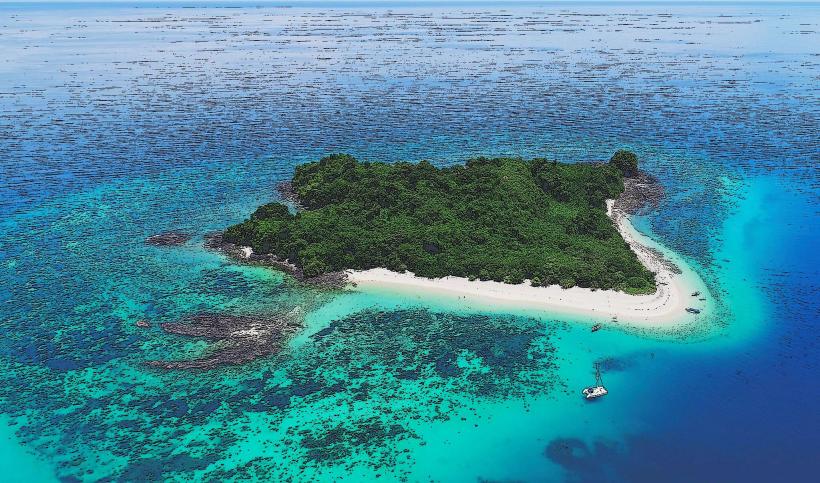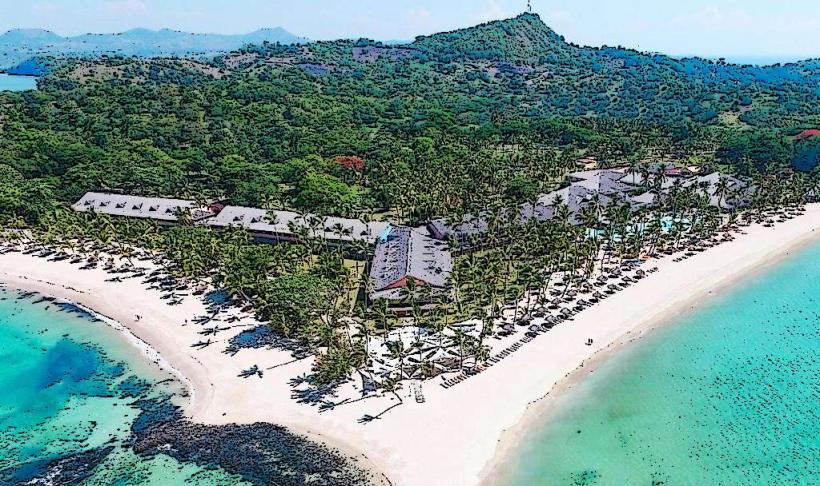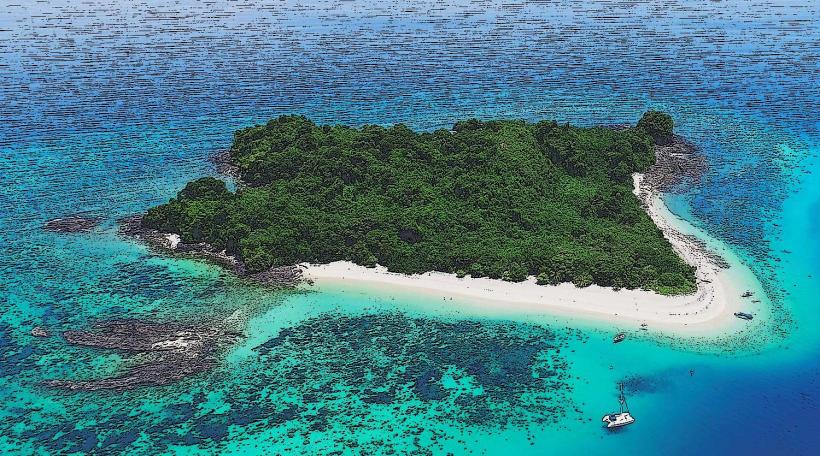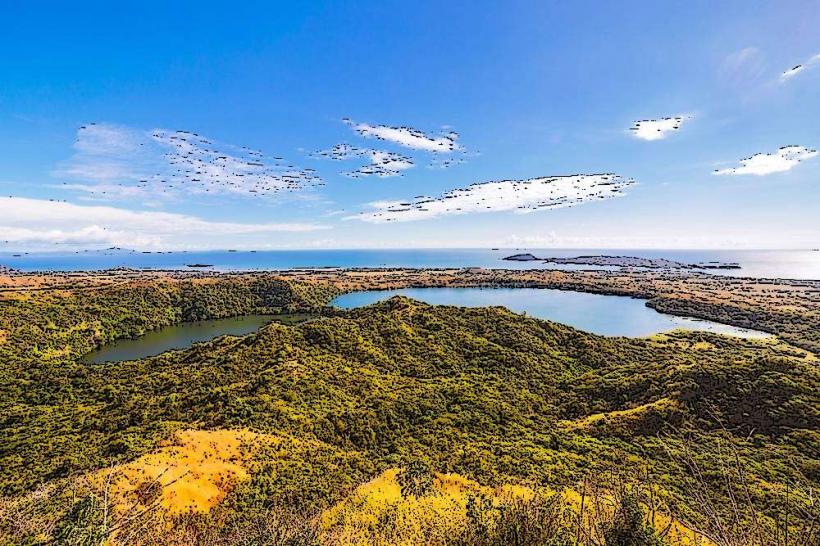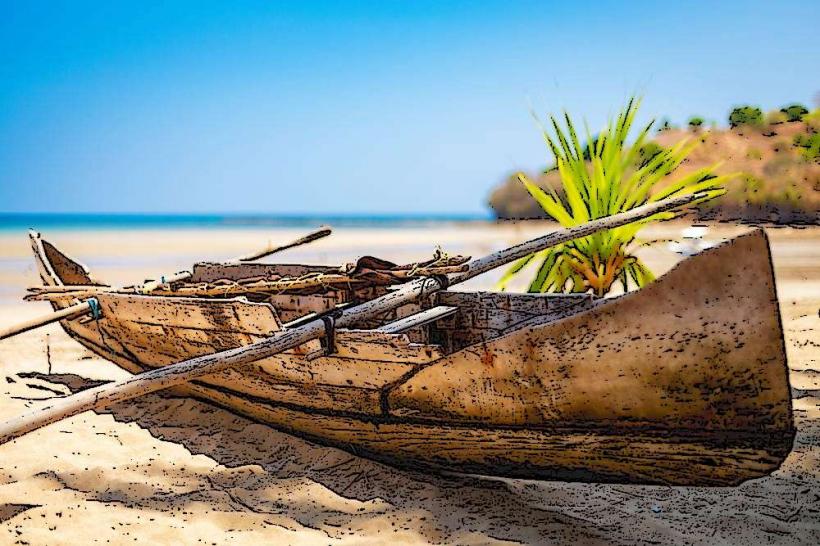Information
Landmark: Lokobe ReserveCity: Nosy Be
Country: Madagascar
Continent: Africa
Lokobe Reserve is a protected natural area located on the southern part of Nosy Be Island, off the northwest coast of Madagascar. The reserve is one of the most significant remaining rainforests on the island and is known for its rich biodiversity, including unique plant and animal species that are endemic to Madagascar. It offers a rare glimpse into the island's natural environment, particularly its lush tropical forest ecosystems.
Location and Geography
- Location: Lokobe Reserve is situated on the southern tip of Nosy Be Island, approximately 20 kilometers (12.5 miles) from the main town of Hell-ville. It covers an area of about 740 hectares (1,830 acres).
- Geography: The reserve is characterized by its dense rainforest, rolling hills, and coastal mangroves. The landscape varies from lowland rainforest to coastal wetlands, making it ecologically diverse.
Biodiversity and Ecological Significance
- Flora: Lokobe is home to many species of plants, many of which are endemic to Madagascar. The rainforest is thick with tropical trees, shrubs, and medicinal plants, some of which have been used by local Malagasy communities for centuries.
- Fauna: The reserve is famous for its diverse wildlife, particularly the many species of animals that are found nowhere else in the world. Some of the notable species include:
- Lemurs: Lokobe is one of the last strongholds for the black lemur (Eulemur macaco), an endangered species endemic to Madagascar. Visitors to the reserve may have the chance to see these lemurs in the wild, often in small groups.
- Chameleons: The reserve is also home to several species of chameleons, including the Nosy Be chameleon (Furcifer oustaleti), which is one of the largest species.
- Birds: Lokobe is an important bird habitat, with many species of endemic Malagasy birds, including the Madagascar kestrel and various species of vanga.
- Invertebrates: The rainforest is teeming with a variety of insects, including rare and colorful butterflies, beetles, and spiders.
- Marine Life: The reserve’s proximity to the coast also means that it is an important area for marine biodiversity, including mangrove ecosystems that support various species of crabs, fish, and other marine organisms.
Conservation Efforts
- Protected Area: Lokobe Reserve was established to protect the unique ecosystem of the region and to conserve the species that live within it. The reserve is part of the larger Nosy Be Conservation Area and is managed by Madagascar National Parks (MNP).
- Local Involvement: Local communities are actively involved in the conservation of the reserve, with many of them working as park guides, ecotourism operators, and in sustainable farming practices. There is a strong emphasis on community-based conservation to ensure that the local population benefits from the protection of the area while maintaining sustainable practices.
Activities and Attractions
- Guided Tours: The best way to explore Lokobe Reserve is through a guided tour, where trained local guides lead visitors through the dense rainforest. The tours offer a chance to see the unique wildlife, including lemurs and chameleons, and learn about the forest's ecology and conservation efforts.
- Wildlife Watching: In addition to lemurs and chameleons, Lokobe is an excellent place to observe Madagascar's rare and endemic bird species, making it a favorite destination for birdwatchers.
- Hiking: There are several hiking trails within the reserve, ranging from easy walks to more challenging treks. These trails offer opportunities to explore the rainforest, with stops at viewpoints that provide scenic views of the surrounding landscape and the nearby coastline.
- River Tours: Some visitors also take guided boat tours along the rivers and mangroves near the reserve, where they can observe local wildlife in a different environment.
Access and Tourism
- Getting There: Lokobe Reserve is accessible by boat from Nosy Be. The boat ride typically takes about 30 minutes from the town of Hell-ville or the nearby beaches. The reserve is also accessible by land for those staying closer to the southern part of Nosy Be Island.
- Accommodation: There are several eco-friendly lodges and hotels located around Nosy Be and the southern coast, offering convenient access to the reserve. Many of these accommodations focus on sustainable tourism and provide opportunities for visitors to enjoy both the rainforest and the beaches.
- Best Time to Visit: The best time to visit Lokobe Reserve is during the dry season, from May to October, when the weather is mild, and the trails are more accessible. The wet season, from November to April, can bring heavy rainfall, making hiking and exploration more difficult.
Cultural and Local Communities
- Traditional Knowledge: The local Sakalava and Antankarana communities have long been involved in the natural management of the area. Their knowledge of the rainforest, medicinal plants, and local wildlife plays a key role in the sustainable management of the reserve.
- Eco-Tourism: Tourism in Lokobe is centered on eco-tourism, where the primary goal is to create an economic benefit for the local community while preserving the environment. Local guides often provide tours, showcasing the natural beauty and the importance of conservation efforts in the area.
Key Facts:
- Reserve Size: 740 hectares (1,830 acres)
- Location: Southern Nosy Be, Madagascar
- Biodiversity: Endemic lemurs, chameleons, birds, and rich plant life
- Activities: Guided wildlife tours, hiking, birdwatching, eco-tourism
- Best Time to Visit: May to October (dry season)
- Conservation: Managed by Madagascar National Parks (MNP), community-based conservation efforts
Lokobe Reserve is a true gem for nature lovers, wildlife enthusiasts, and eco-tourists. With its exceptional biodiversity and focus on conservation, it offers a unique opportunity to explore Madagascar’s natural heritage while supporting local communities.

